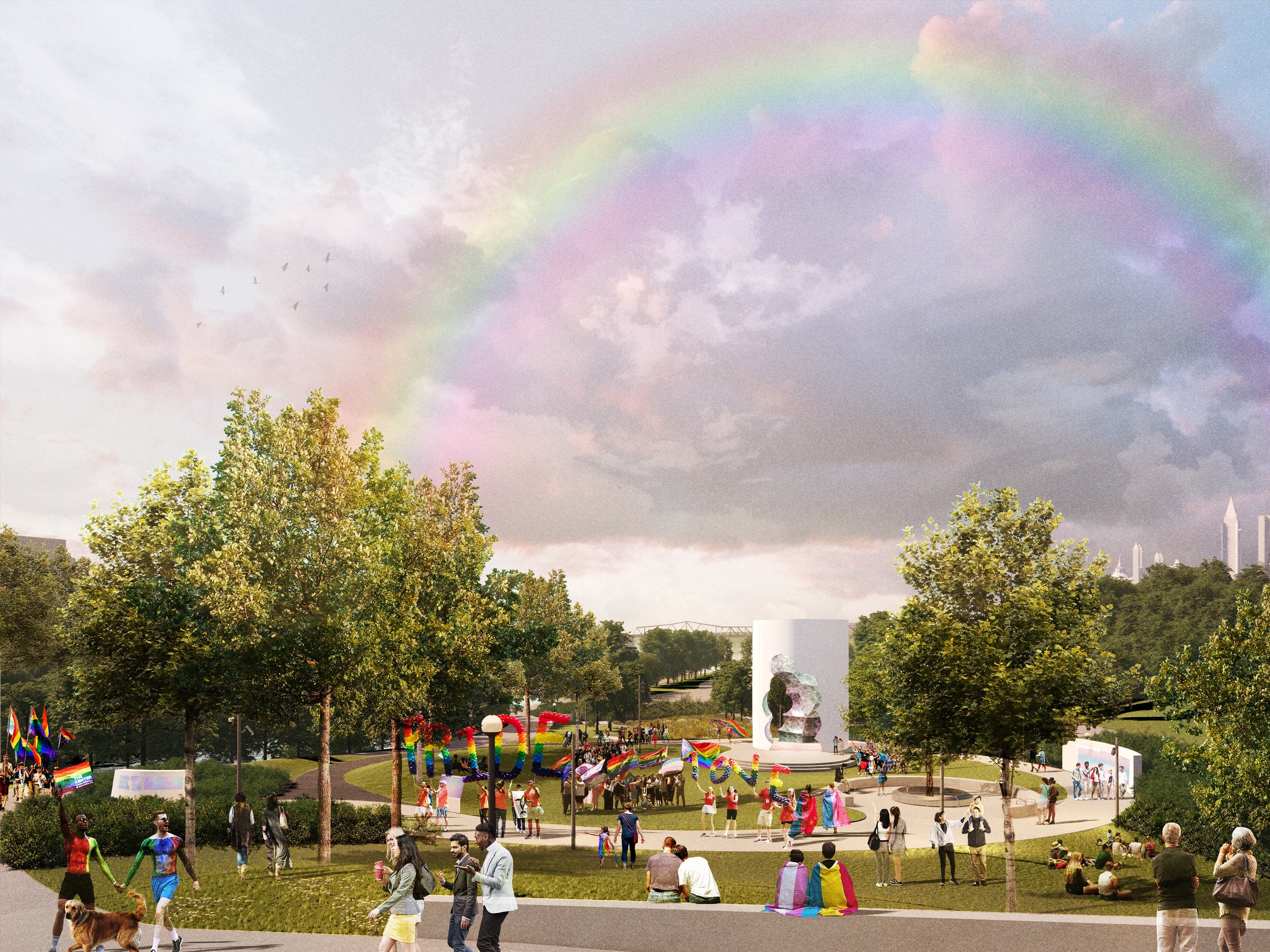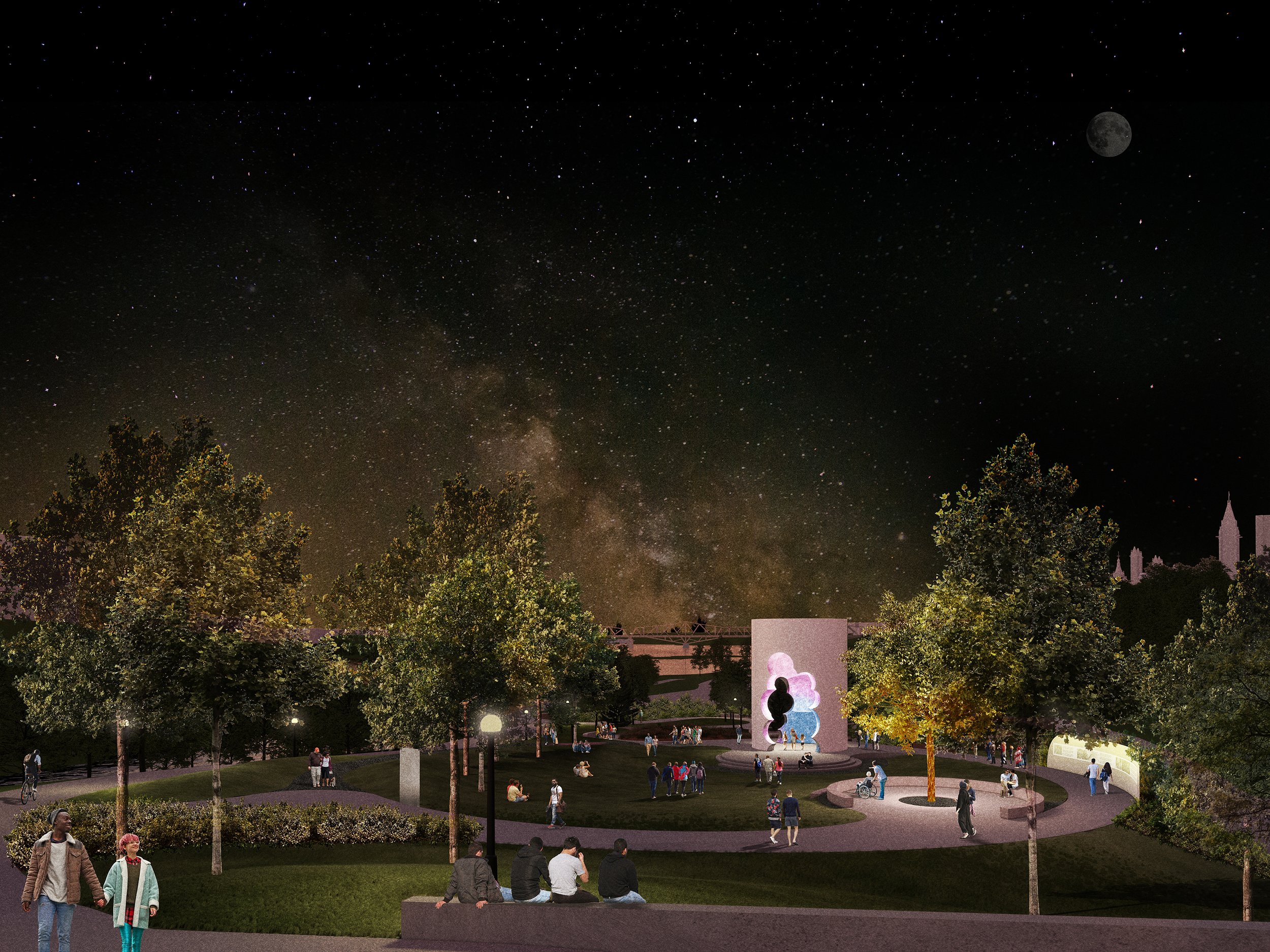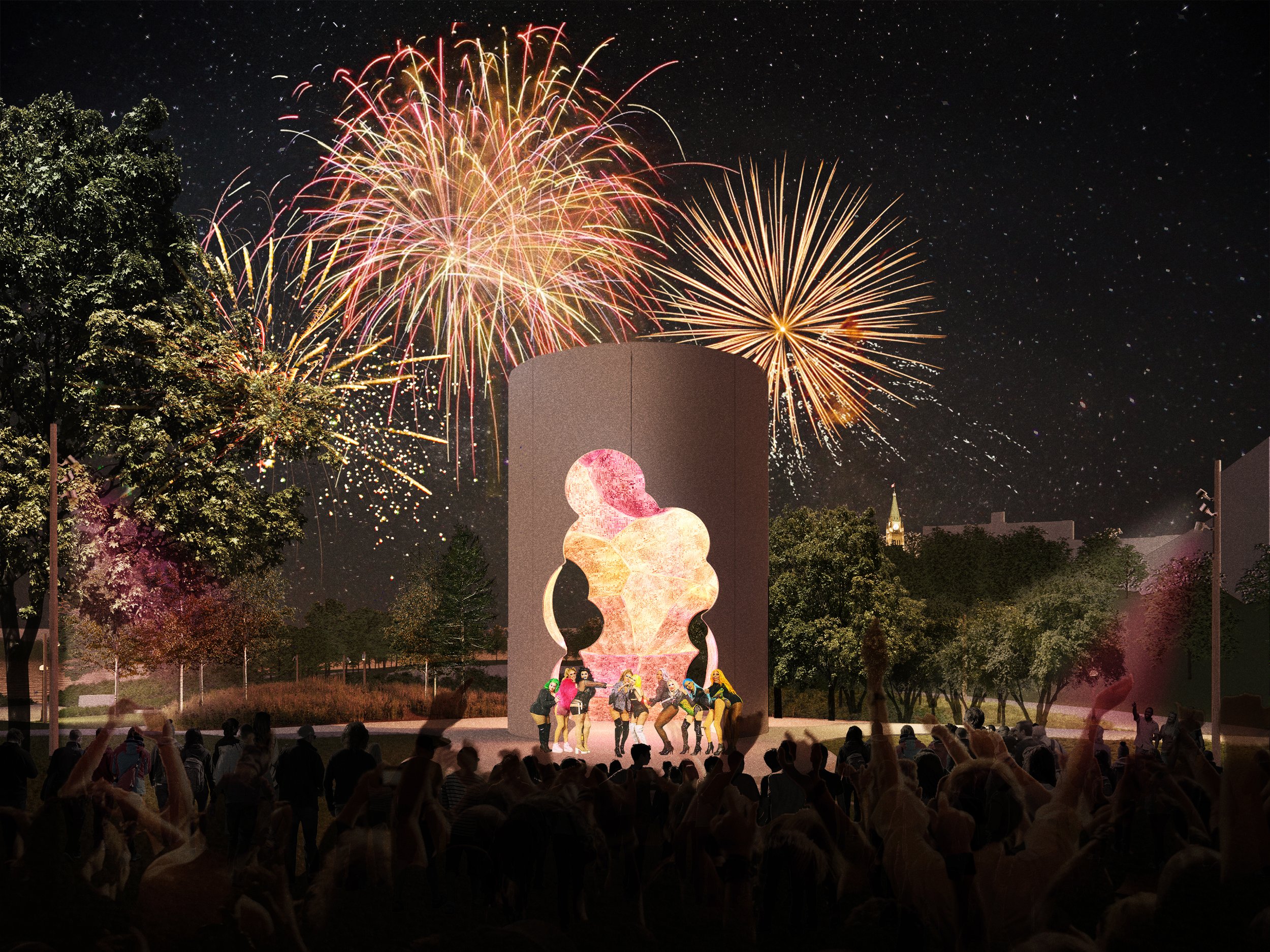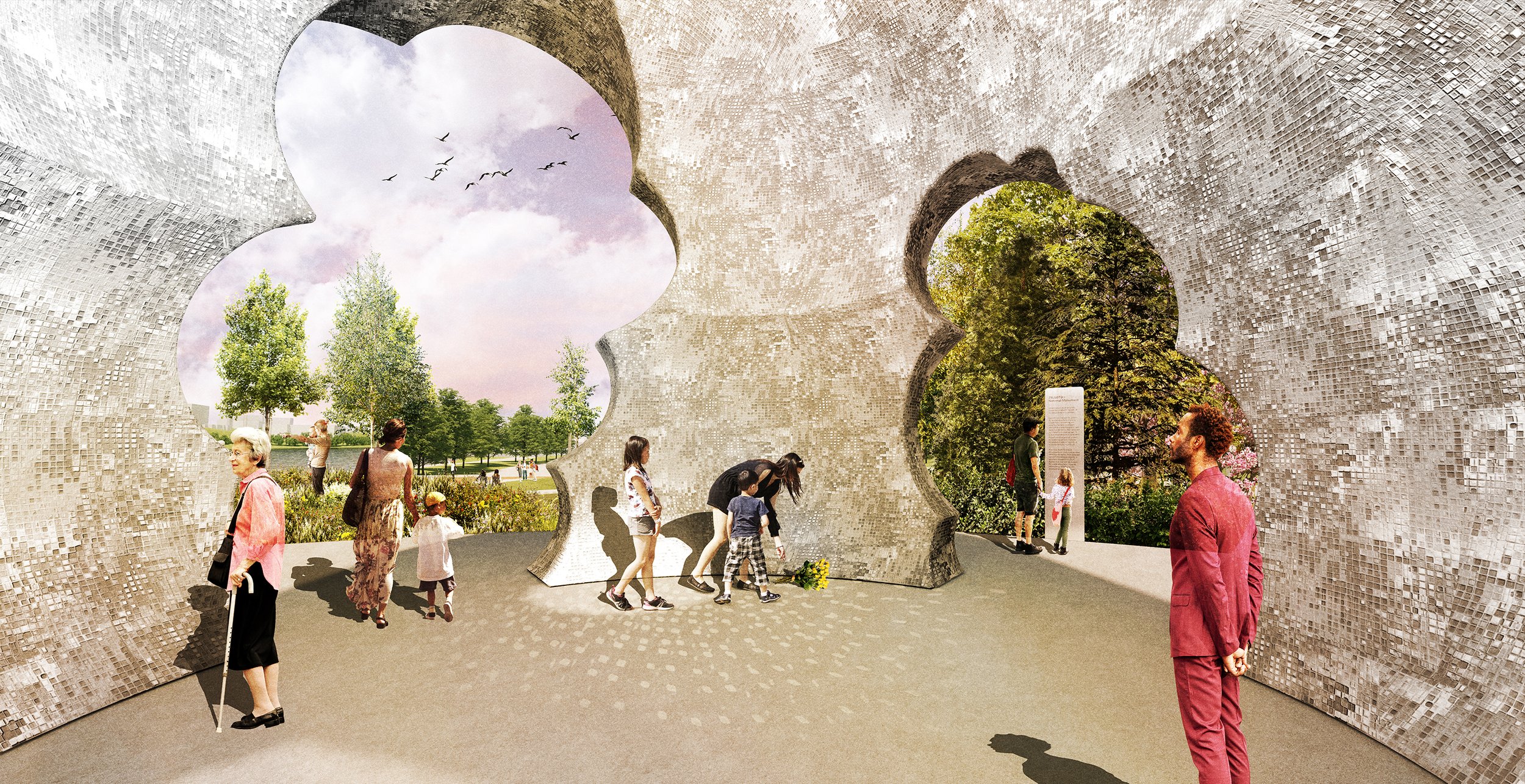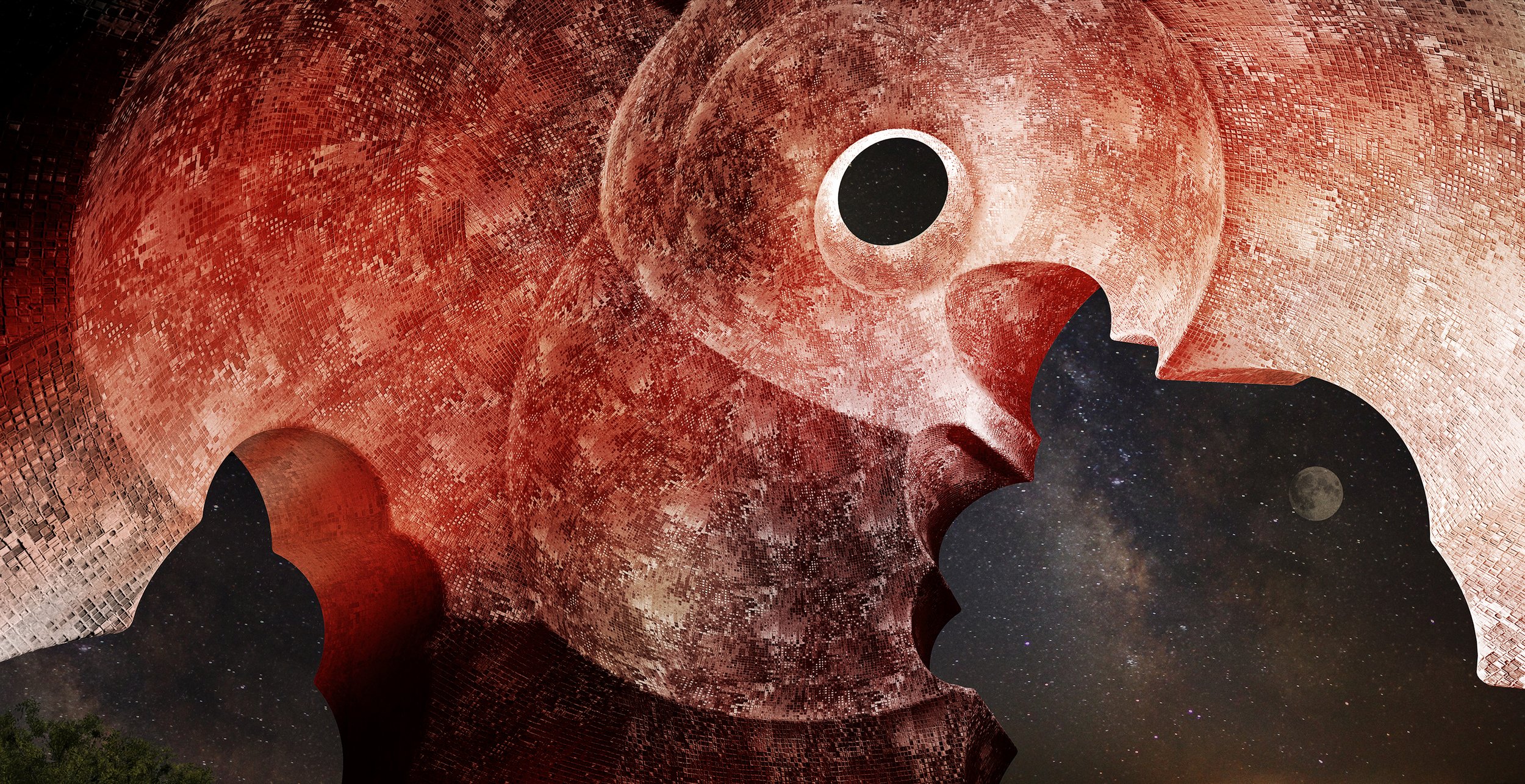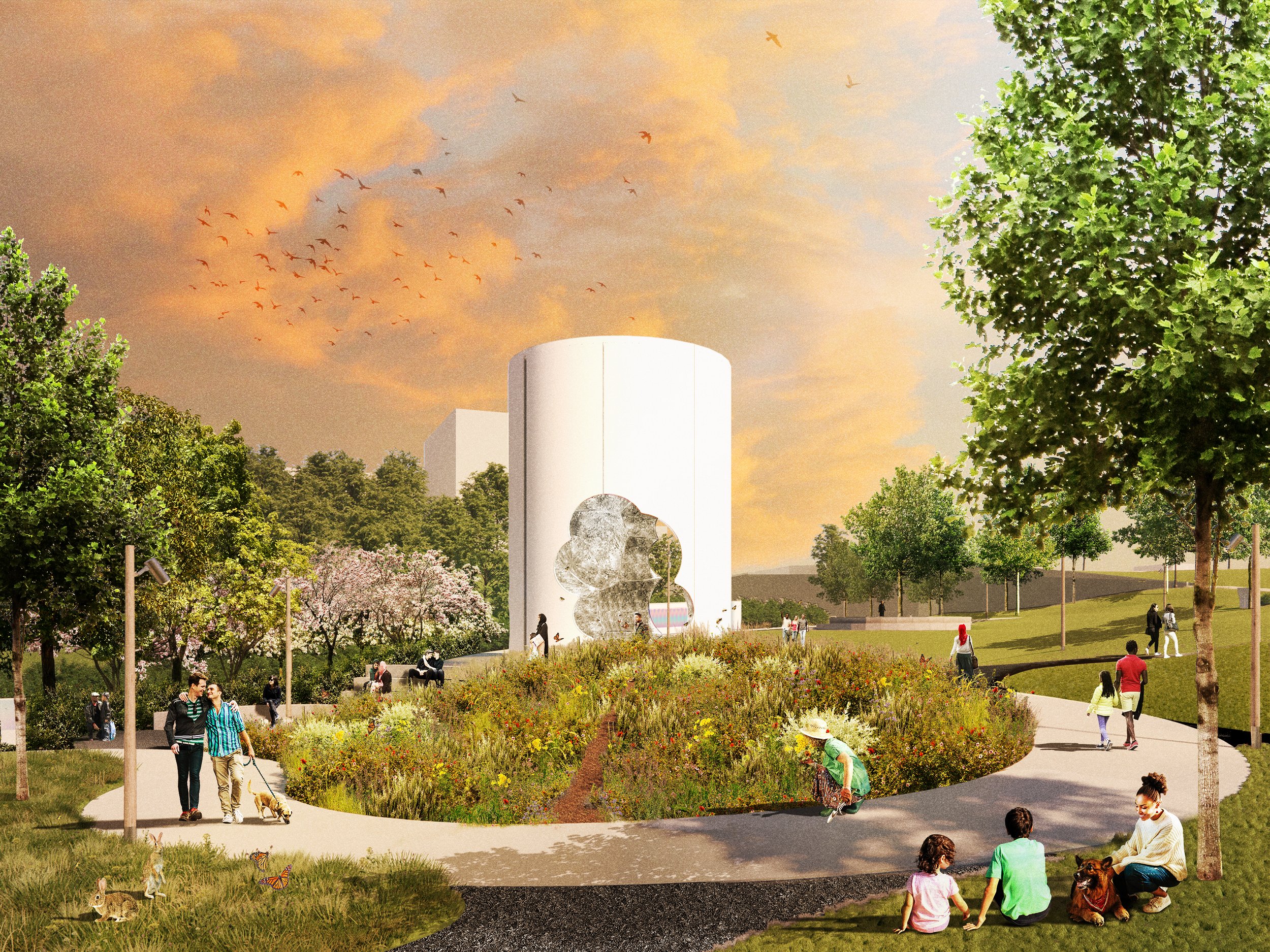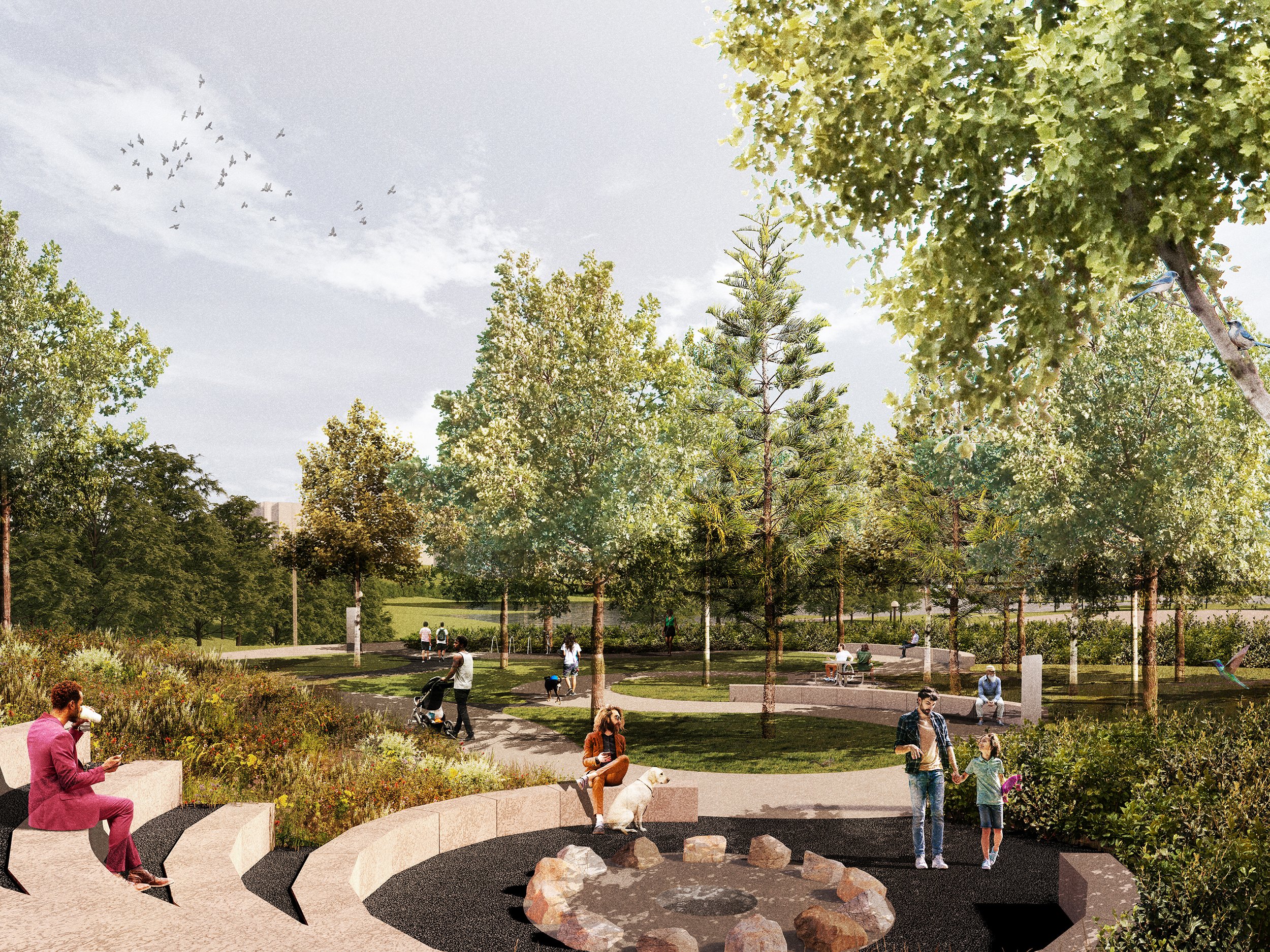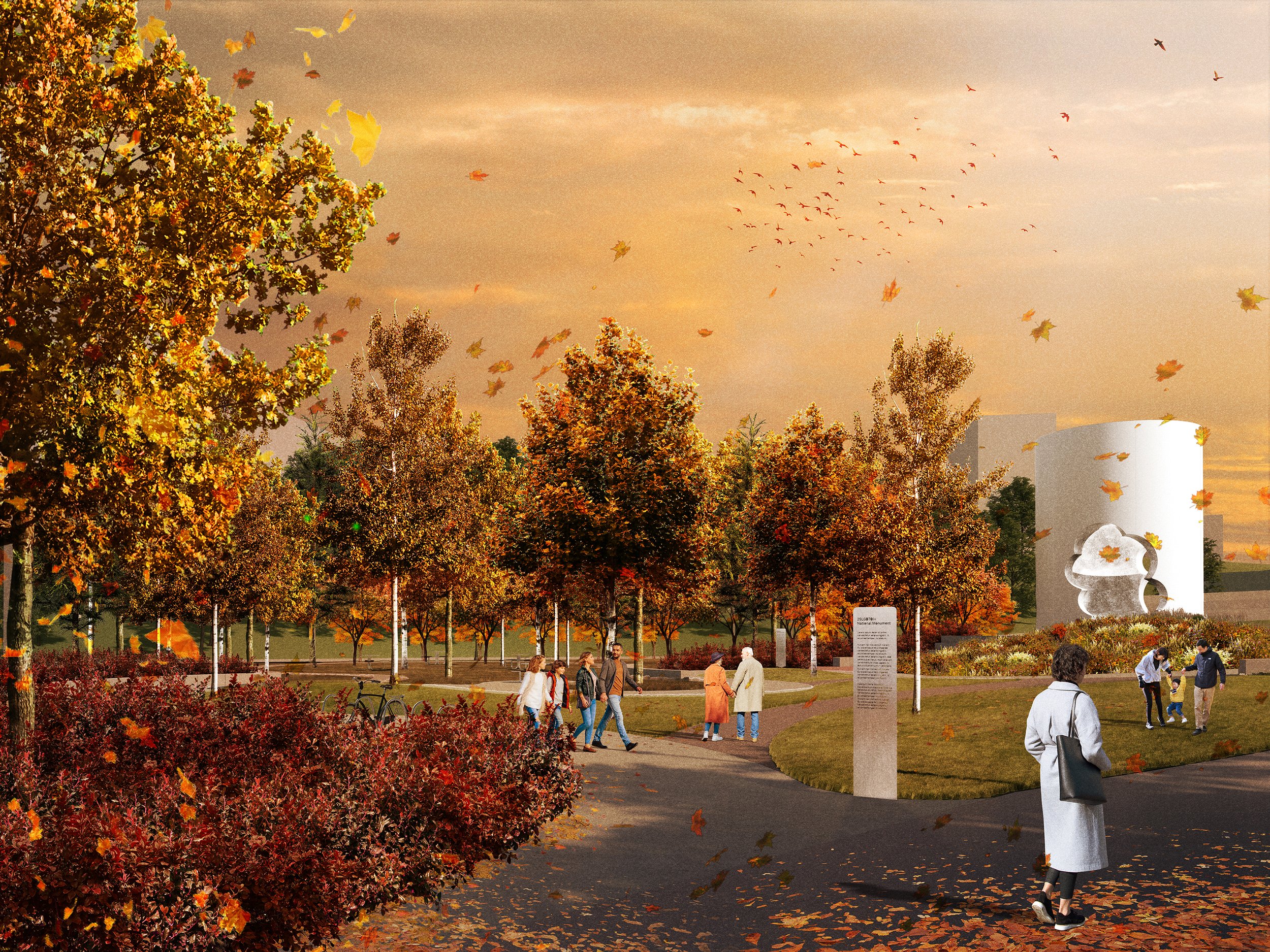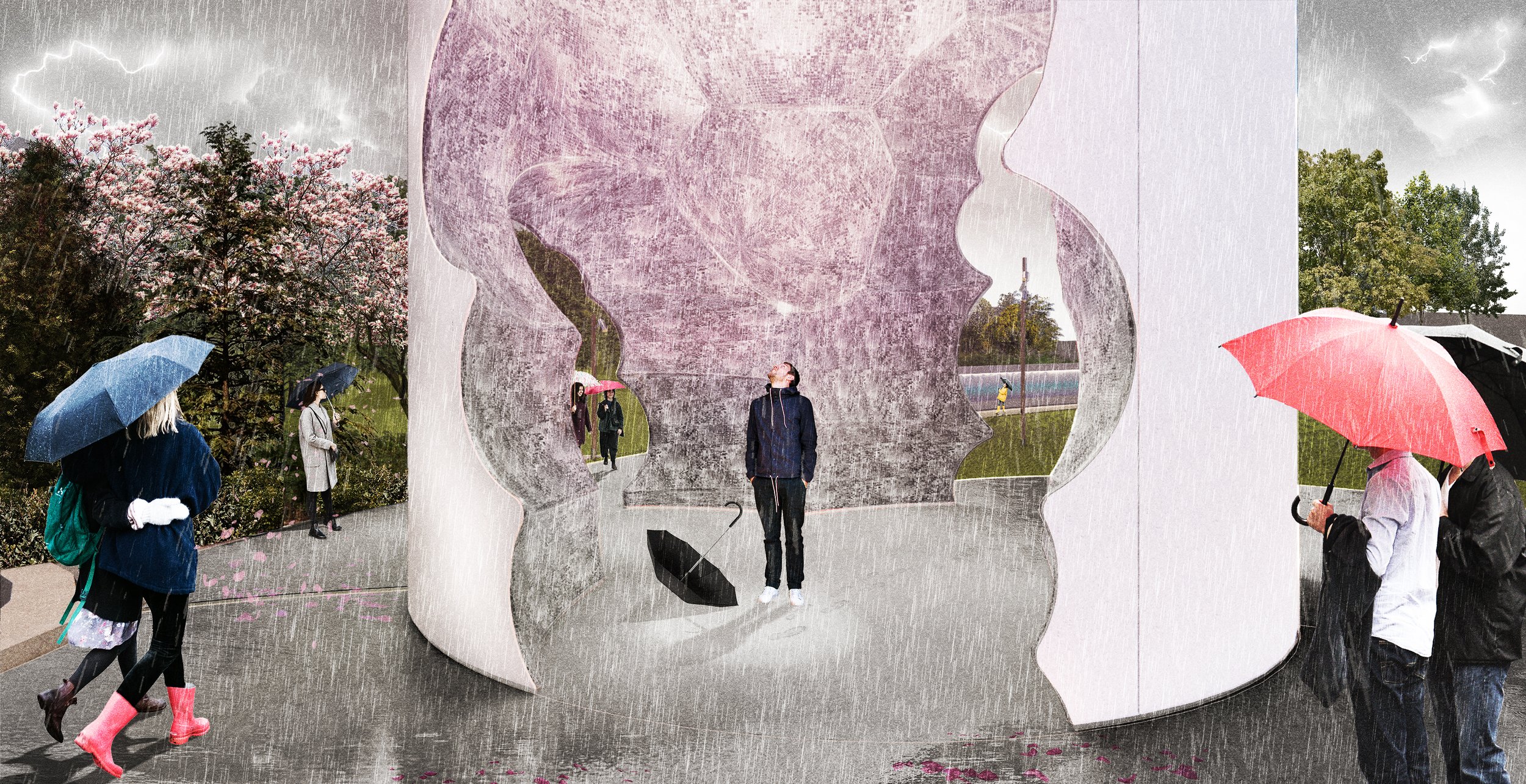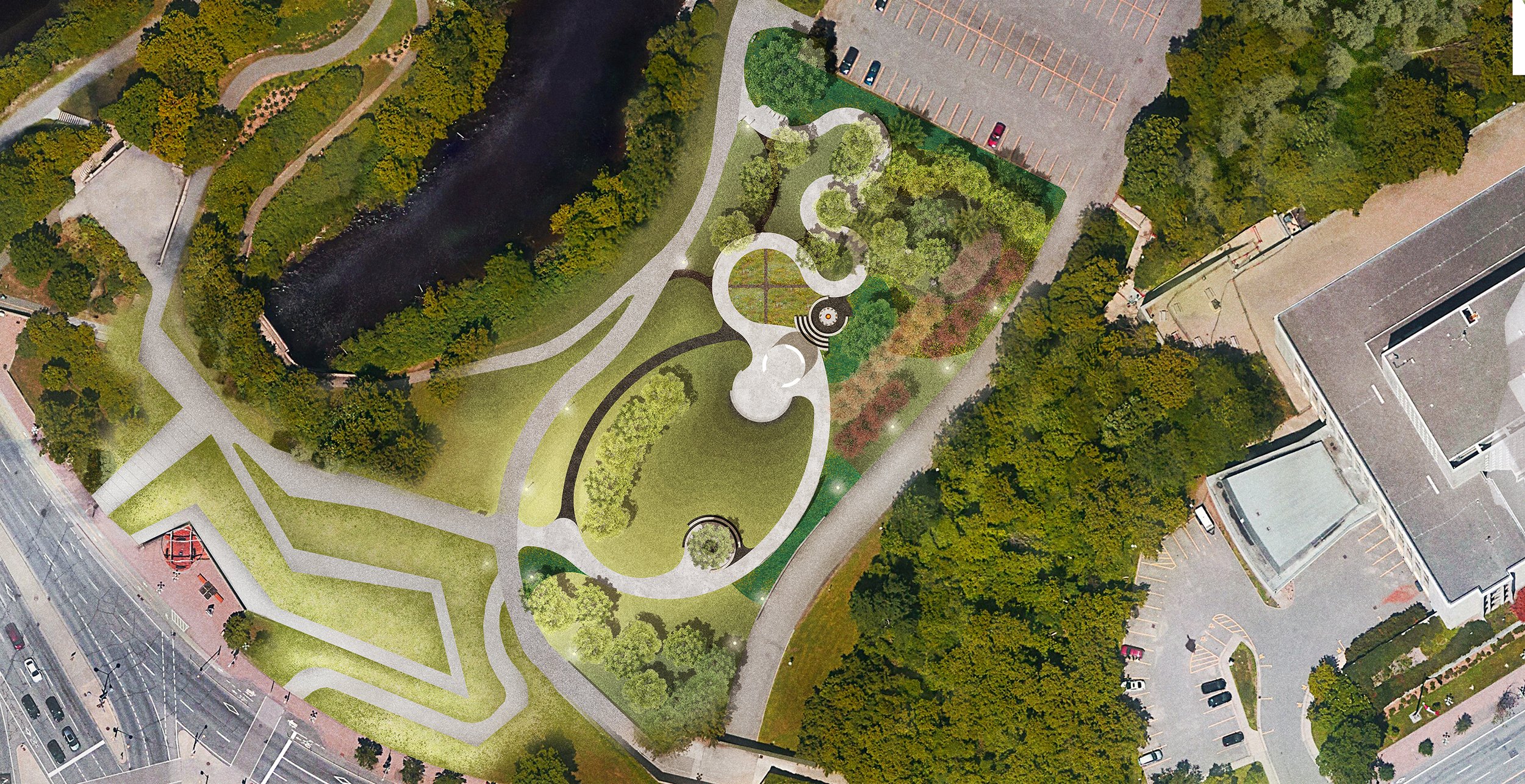THUNDERHEAD . 2SLGBTQI+ NATIONAL MONUMENT
Ottawa, Ontario
THUNDERHEAD is the winning design proposal for the 2SLGBTQI+ National Monument in Ottawa. The project is a collaboration between Public City, artists Shawna Dempsey and Lorri Millan, and Two-Spirit Advocate Albert McLeod.
This monument stands as testament to systemic injustices against 2SLGBTQI+ peoples perpetrated and condoned by the Canadian state, and it memorializes individuals who were lost and harmed by these actions, including the many who were impacted by the Purge. The trauma was deep, irreconcilable and requires public accountability. The Thunderhead design we propose irrefutably attests: “this happened”, “this was wrong” and “our lives mattered”. It also embodies joy, love, creativity and strength as 2SLGBTQI+ communities and individuals, for we are so much more than pain and oppression. Thunderhead honours those who have gone before and is alive in the present. It is an active space in which to make our own meanings and to imagine ourselves into the future.
At the entrance to the site, a wide, curving path arcs toward the Ottawa River. The visitor is drawn forward, flanked by a gently sloping grassy commons and abundant trees and plantings. This verdant environment envelopes the site, including the destination of the path: an imposing columnar form that rises in the centre of the grounds. However, this monumental structure is not monolithic. It is disrupted—cut away— revealing a flashing and glowing interior that seems to break apart the form, pushing it outwards and upwards: a rising Thunderhead embodying activism, change and renewal.
The visitor’s journey towards this barely contained cloud begins with water. A drinking fountain addresses the body’s needs and marks a ceremonial/symbolic beginning to the path which then continues past didactic panels tracing the history of Canadian 2SLGBTQI++ peoples. This includes the incarceration of Two-Spirit children in Indian Residential Schools, abuses of government employees in 1950-90s and recent battles for basic human rights for Trans people. A circular pause in the path centred around a tribute basin allows a stop for reflection and a place where offerings and mementos can be left. A poetic text marks this as a space of memorialization.
As the path continues, the ground slopes down; this creates an illusion that the path rises up to become a bridge into the monument itself. The visitor enters Thunderhead, elevated inside the volume of the cloud, able to look down to ground level and up into its heights. The roiling interior of the form is covered in glass mosaic tiles. This material reflects light inwards and out, and reminds the viewer of mirror balls, speaking to joy, community and sexuality. Thunderhead is a luminous space that literally reflects our many identities. It is also a void, symbolically holding those we have lost. Whether standing on this balcony or at ground level, the visitor is bathed in light, awash in prismatic brilliance, enfolded into the form itself. One is immersed in the immensity of the experiences of the 2SLGBTQI+peoples, and the power of collective rage, activism and hope that has brought us to the present.
This structure embodies emergence to inalienable, inherent selfhood, human rights and empowerment. It also symbolizes erosion of fixed notions of gender and sexuality. The billowing cloud in the interior space seems to be growing, just as our movement continues to grow. A skylight in the roof of the column extends the power of the cloud beyond the architecture—the cloud is breaking through the monument. In this way it challenges monuments that surround it. The lookout from the Thunderhead provides views of the Houses of Parliament, The Supreme Court and the National Archives, institutions that now protect us, and the Ottawa River, a waterway that joins with others across the country to unite us.
Thunderhead is the focal point of the site, and many paths invite the visitor to, around and inside it. It also invites creativity and activism. The ground level of this dynamic sculptural pavilion contains two stages, one interior and intimate, and one larger and outward facing. The smaller is ideal for vigils, intimate gatherings and readings. The larger thrusts beyond the monument toward the sloping lawn that can accommodate 2000 people. This stage is designed for protests, larger performances and dance parties. The two performance areas are key. They acknowledge the importance of art to our history and provide platforms, accessible to anyone, to proclaim, “I am”. The stages will be animated by our queer superpower (performance), dancing (which has always been part of our revolution) and protest (for the fight for justice is not over).
A path at the base of the Thunderhead leads to a large medicinal garden and a healing circle of 13 stones hand- picked by Two-Spirit Elders, one from each province and territory. The rocks encircle a firepit for ceremonial use. This space is a setting for reflection and healing. Other circles dot the north end of the park, for relaxation, play and socializing. These circular zones reference mapping conducted by the Canadian state to identify locations where “deviants” congregated (a Purge survivor quipped that there were so many dots, they quickly merged into one). The monument site marks one such location: the cruising areas along the banks of the Ottawa River and in adjacent parks.
The site is shaded by trembling aspen, a tree that turns brilliant yellow in fall. This species represents the strength of our communities: they share one root system, even as they appear to be many individuals. Their leaves create a chorus as they move in the breeze. The word “trembling” evokes our history of fear, our experience of sexual energy and our anticipation for the future. The site also includes a fruit orchard, alive with vibrant blossoms. Fruit and flowers are symbols often associated with queerness and are reclaimed here to provide sustenance and beauty.
Red is the accent colour of the design throughout the site, a colour chosen to reflect our lifeblood, anger and power. It is also the colour of the Red Ribbon (AIDS) and the Red Dress (MMIWG+), two potent symbols of our activism throughout queer history.
The entire site is designed to create many different opportunities for engagement, and many ways to feel “belonging”. Our histories and experiences are different. Our identities are different. Our proposed design creates room for these differences to be expressed actively in different ways, at different times. It is a site for Pride celebrations and protest rallies, drag shows and vigils; a spot to gather with friends on a blanket or play with ones’ children; a space to remember the trauma of the past; a space to ask for healing and peace; a lookout to the river from which to contemplate the past and look to the future. We are hiding no longer: Thunderhead is a highly visible monument that honours those who have come before while creating space for those who will follow.
Above all, the monument is a lasting testimony to the courage and humanity of those who were harmed by the 2SLGBTQI+ Purge. This glittering, dynamic memorial stands in contrast to all of the places where we have been rendered invisible in the past and shines proudly into the future.
